If you have a fish tank, then you know that keeping the levels of nitrates in check is important. High levels of nitrates can be harmful to your fish and can cause algae growth.
In this blog post, we will discuss how to lower nitrate levels in a fish tank. We will provide tips on how to reduce the amount of Nitrates in your tank and keep your fish healthy!
Aquarium nitrates though good for live plants can be harmful for fish. They can cause stress, lower immunity and kill young baby fish. It decreases oxygen in the water and promotes algae. Nitrates levels can kept in safe by doing regular water changes, adding live plants, not crowding the tank with too many fish, removing decaying plants and not over feeding.
What Are Nitrates?
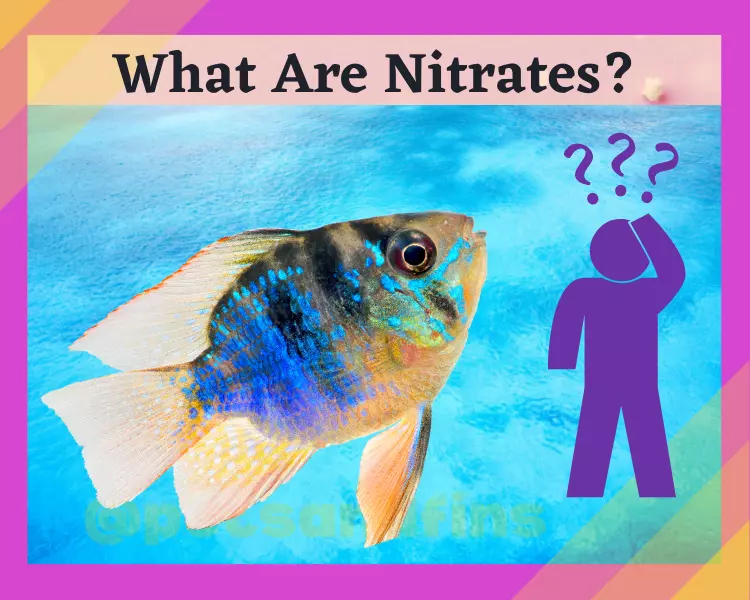
Nitrates in an aquarium are one of the substances formed during the nitrite oxidation during the latter stages of the nitrogen cycle. Nitrogen gas (N2) is converted into ammonia (NH3) by bacteria during the first stage of the nitrogen cycle.
The next step is for the ammonia to be converted into nitrite (NO2-) by other bacteria. The final stage is for the nitrite to be oxidized into nitrate (NO3-) by still other bacteria. This process is what produces nitrates in an aquarium and it’s why they’re considered a measure of water quality.
High levels of nitrates can be harmful to fish, so it’s important to monitor them and make sure they’re within safe limits.
How Are Nitrates Harmful?
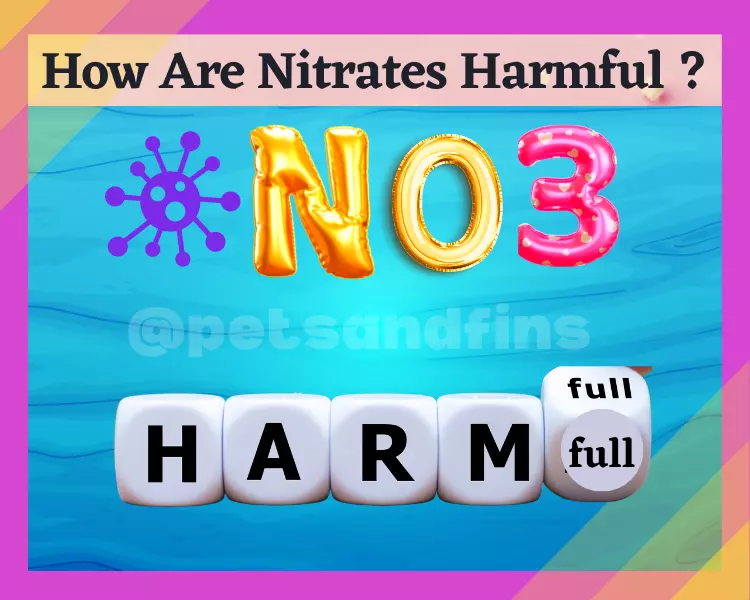
Chronic exposure to nitrates can cause death in fish. In aquatic environments, nitrates can cause algal blooms, which can lead to oxygen depletion and death of fish and other aquatic organisms.
Chronic exposure to high levels of nitrate can cause death in fish by interfering with their ability to breathe. It can also affect their growth, reproductive success, and survival rates.
In addition, high levels of nitrate can contribute to the development of algal blooms, which can create other water quality problems.
Stress
Fish have gills that extract oxygen from the water to power their muscles. The higher the nitrate levels in the water, the harder it becomes for fish to extract oxygen from the water. This can lead to a build-up of lactic acid in their muscles, which can cause fatigue and stress.
It can also interfere with their ability to respire and get rid of carbon dioxide, which can also lead to stress. Finally, when there are high levels of nitrates present in the water, it can also lead to a rise in pH levels.
This too can be harmful to fish as it can cause them discomfort and even death.
Lowers Immunity
High nitrate levels can also disrupt fish’s metabolism and suppress their immune system, making them more susceptible to disease. There are a few different ways that nitrates can lower immunity in fish.
First, elevated levels of nitrates in the water can cause stress to fish which weakens their immune system.
Second, high nitrate levels can lead to a condition called “nitrate poisoning” which inhibits the ability of blood cells to transport oxygen properly throughout the body – this puts a strain on the fish. This can also lead to stress.
Difficulty In Reproduction
There are a number of ways in which high nitrate levels in an aquarium can lead to difficulty in reproduction in fish. For one, nitrates can inhibit the uptake of oxygen by the fish, which can lead to fertility problems.
Additionally, high nitrates can also lead to the formation of abnormally shaped eggs, and decreased egg viability. As such, it is generally best to keep nitrate levels as low as possible in an aquarium if you want to promote successful reproduction among your fish population.
Kills Young Fish Or Affects Growth
Nitrate levels in aquariums can negatively affect young fish in a number of ways. High nitrate levels can be toxic to fish, and can also cause problems with their growth and development.
Nitrate can inhibit the absorption of oxygen from the water, which can be especially dangerous for young fish who are not yet fully developed.
In addition, nitrate can interfere with the proper functioning of a fish’s gills, making it difficult for them to breathe properly thereby leading to retardation and death.
Decreases Oxygen Supply
Nitrate is a form of nitrogen that is found in both fresh and salt water. As the level of nitrate increases, so does the demand for oxygen. The bacteria that break down the nitrate consume large amounts of oxygen, which can deplete the oxygen levels in the water and lead to fish kills.
Promotes Algae Growth
High nitrate levels in aquariums can promote the growth of algae for a few different reasons. First, high nitrate levels can cause an increase in the amount of dissolved phosphorus in the water, which algae need for growth.
Additionally, high nitrates can encourage the growth of microscopic algae that release nutrients that larger algae can use for growth. Finally, high nitrates may simply provide more nitrogen and other essential nutrients that algae need for rapid growth.
Nitrate Poisoning
When fish are exposed to too much nitrate, they can suffer from a type of poisoning called nitrite toxicity. This occurs when the level of nitrite in their blood becomes too high, and it can be deadly. Nitrate poisoning occurs due to chronic exposure to high levels of nitrates.
Symptoms of Nitrate Poisoning include the following:
- Inactivity. The fish may just settle on the substrate.
- Loss of appetite leading to non consumption of food.
- Difficulty in breathing and short breath span. (Fast gill movement due to lack of oxygen).
- Loss of direction (disoriented), thus swimming abnormally.
- In very severe cases the fish may start bending and become c shaped.
Nitrate Shock
Sudden exposure to high nitrate levels (often happens when a fish is transferred to a tank with nitrate concentration) can cause a condition called “nitrate shock” in fish. This condition can cause the fish to suffocate because they are no longer able to take in enough oxygen from the water.
Nitrate shock can also damage the gills of fish, making it difficult for them to breathe and causing white patches on their gills. As a result, nitrate shock can be fatal to fish.
Nitrate Poisoning and Nitrate Shock differ from each other in terms of exposure. In cases of poisoning the exposure is chronic. However in cases of shock it is sudden and immediate.
What Are The Safe Level Of Nitrates?
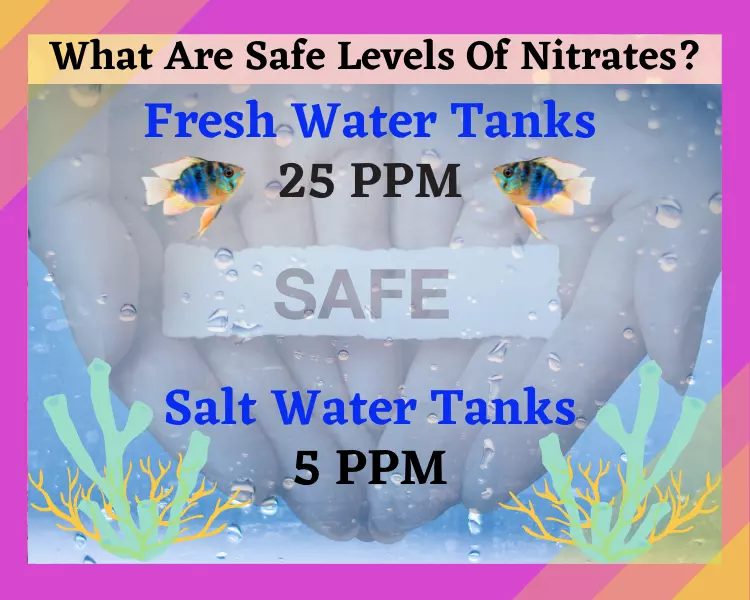
The concentration of nitrates in freshwater aquariums should not exceed 25(preferably) – 40 PPM. In saltwater aquariums, the level of nitrates should not exceed 5 PPM.
These recommended maximum levels are based on multiple research papers. Exceeding these concentrations can result in negative impacts on aquatic life.
How Can You Lower Nitrate Levels?
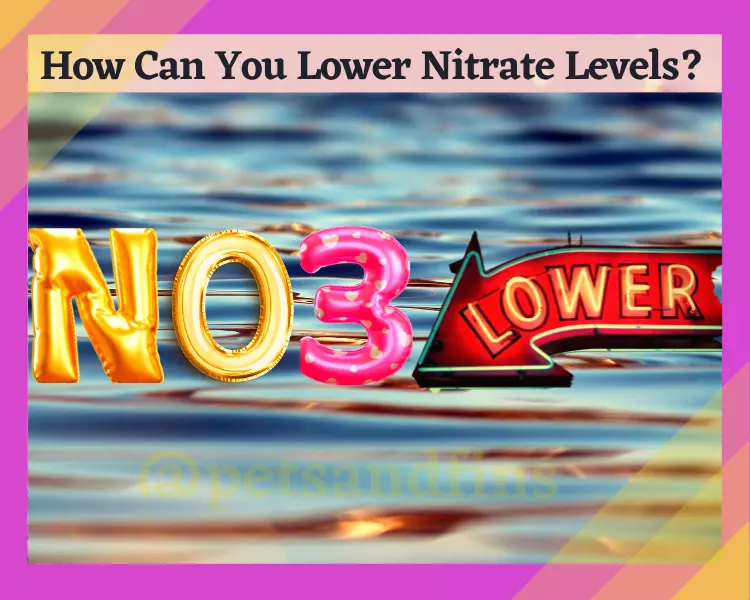
Water Change
Water change is the most common method used to lower the nitrate levels. Be sure to check the water for nitrate levels before you add that water because, some treated water can contain higher level of nitrates, which will only be more harmful.
When you do a water change, it is important that you remove 25% of the water and add fresh water. This increases the oxygen level in the water and makes the fish more comfortable and consequently the nitrate level also goes down.
Add Live Plants
There are a few things you can do to lower nitrate levels in your aquarium. One is to add live plants. Live plants help to consume nitrates and will keep your levels down. Nitrate is produced when fish waste breaks down and is taken up by the plants.
The plants then use the nitrate as a nutrient, which helps them to grow. When you have live plants in your aquarium, they will help to keep the water quality high and the nitrate levels low.
Some good choices for live plants include Anubis, Java ferns, and Amazon sword plants.
Use Plecos & Other Fish
One way to lower nitrate levels in an aquarium is to add scavenging fish and algae eating fish. These types of fish will help to eat the algae and other debris that can cause high levels of nitrates.
Achieve lower nitrate levels in your aquarium with the addition of plecos, scavenging fish, and algae eating fish. These fish help to keep the water column clear of excess nutrients which can lead to high nitrate levels.
Certain types of catfish, such as the Plecostomus, are especially good at removing nitrates from the water. They consume vast quantities of algae and other decaying plant material, which helps to lower the overall nitrate levels in the aquarium.
In addition, adding more plants to the aquarium will also help to absorb some of the nitrates. This apart they also eat up all the fish waste and scavenge the tank.
The algae eating fish also eat the algae on the leaves of the plants so that the plants are able to absorb more nutrients with cleaner leaves. In this way live plants are made more effective.
Use A Nitrate Reducer
There are a few different additives that can be used to lower nitrate levels in an aquarium. These additives work by converting the nitrates into other compounds that are less harmful to fish and plants.
Nitrate reducers can be added to the water when levels become alarming. They work by binding to the nitrates in the water and converting them into ammonia or nitrogen gas.
This process helps to reduce the amount of harmful nitrates in the aquarium and keeps levels within safe limits for fish and plants.
Nitrate Reducers come in the form of tablets liquids, blocks, or crystals.
Nitrate Sponges
Nitrate sponges are a type of filter material that can be used in aquariums to help lower nitrate levels. Nitrate sponges work by adsorbing wastes from the water, which then reduces the amount of nitrates available for uptake by plants and other organisms.
This in turn can help to lower the overall nitrate level in the aquarium.
There are a number of different brands and types of nitrate sponges available on the market, so it is important to do some research to find one that will work well for your particular setup.
Many aquarists use nitrate sponges in conjunction with other methods of filtration and nitrogen removal, such as live plants etc.
What Can You Do To Prevent Nitrates From Going Up?
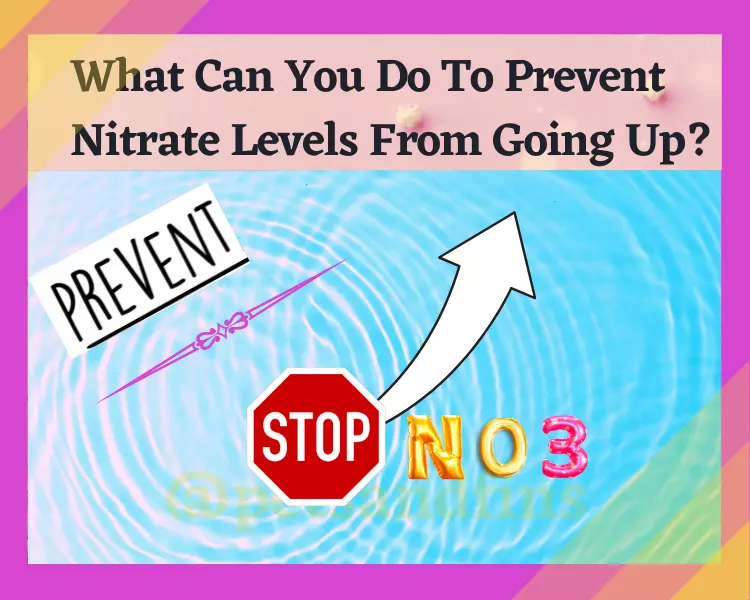
Do Not Over Crowd The Aquarium
Do not over crowd the aquarium with too many fish. Nitrates are produced as a natural byproduct of the waste fish produce, and if there is too much waste in the water, the levels of nitrates will increase.
The more fish there are in an aquarium, the more ammonia they will produce. Ammonia is converted into nitrates, so by reducing the number of fish you can help to keep levels of nitrates.
Also ensure that the filter is working properly and that it is large enough to accommodate the size of your aquarium.
Do Not Over Feed
Fish produce ammonia as a waste product, and you need to provide bacteria with a way to break this ammonia down into less harmful substances. When you overfeed the fish, you are providing the bacteria with more food than it can handle, and the nitrates will start to rise as a result.
Feed the fish just enough that there no food left in the tank for the fish to casually go back and eat later. Also observe the tank. If you feel the fish waste is too much, then you know you are overfeeding.
Adequate Filtration System
Nitrates can be a major problem in aquariums, as they can cause fish to become sick and even die. Fortunately, there are a few things you can do to help keep them from rising. The most important thing is to make sure you have a good filtration system.
This will help remove excess nitrates from the water. There are a few different types of filters that can be used, so you will need to find one that suits your aquarium size and type of fish.
Some common filter types are canister filters, power filters, hang-on-back filters, and internal filters.
Remove Decaying Plants
To prevent nitrates from rising in your aquarium, you should remove decaying plants and other organic matter as soon as possible. High levels of nitrates can be harmful to fish and other aquatic creatures, and can also lead to an increase in algae growth.
Decaying plants are a major source of nitrates in water. When these plants decompose, they release their nutrient stores back into the water, where they can be taken up by other aquatic plants.
Maintain PH, KH And GH
Nitrates are one of the most common problems faced by aquarium owners. High nitrate levels can lead to a number of problems, including poor water quality, algae growth, and even fish death.
Higher pH levels can cause ammonia poisoning, while lower pH levels can stress fish. Maintaining proper pH, hardness, and alkalinity levels in your aquarium can help to bring down nitrate levels and keep your tank healthy.
Since KH & GH have a bearing on PH levels, maintaining all three becomes necessary.
Use Nitrate Lowering Media In Your Filter
There are a number of ways that nitrate lowering media can help bring down nitrates in an aquarium. One way is by providing a place for bacteria to grow that will consume ammonia and convert it into nitrites.
Another way is by absorbing ammonia directly from the water. Nitrate lowering media can also help by pulling phosphate out of the water, which can contribute to algae growth. Nitrate lowering media come in many types like gravel, special pads etc.
Adding them in your filter can make things much easier and better.
Promote Growth Of Good Bacteria
It is believed that certain good bacteria consume nitrates and other toxins in the water, thus helping to clean the aquarium and keep the fish healthy. The use of beneficial bacteria to control nitrates is a fairly new technology in aquarium husbandry, and one that has shown great promise.
By adding specific strains of probiotic bacteria to your tank, you can help to establish a healthy population of “good” bacteria that will compete with the harmful bacteria for available food sources.
This will help to reduce levels of toxic compounds such as nitrates and ammonia, keeping your fish happy and healthy.
Clean Your Filters Regularly
A clean filter helps bring down nitrates in your aquarium by removing the organic matter that decomposes and creates ammonia. This decrease in organic matter will also help to reduce the growth of algae, which can compete with other aquatic plants for light and nutrients.
Additionally, a clean filter will help to improve water clarity, making it easier to monitor fish and plant health. So cleaning your filter regularly helps the filter be more effective.
Pro Tip: Remember, cleaning the filter too often is not good either. It kills the good bacteria in the filter. So check your filter for clogging and clean only when necessary.
Use A Canister
It helps to bring down nitrates in your aquarium by removing organic material (such as decaying plants, fish waste, and uneaten food) from the water. This process reduces the amount of nitrates in the water, which makes it more hospitable for fish and other aquatic life.
Additionally, it can help to clear up cloudy water by releasing dissolved oxygen into the water. Since the canister is very powerful it clears the water better and does not need cleaning often.
Substrate Cleaning
Substrate cleaning helps bring down nitrates in your aquarium by reducing the amount of waste and uneaten food that can rot and release ammonia back into the water. Ammonia is toxic to fish and can cause high levels of nitrates in your aquarium.
Substrate also provides a place for beneficial bacteria to grow that help consume ammonia and remove it from the water.
Nitrates In Saltwater Tanks
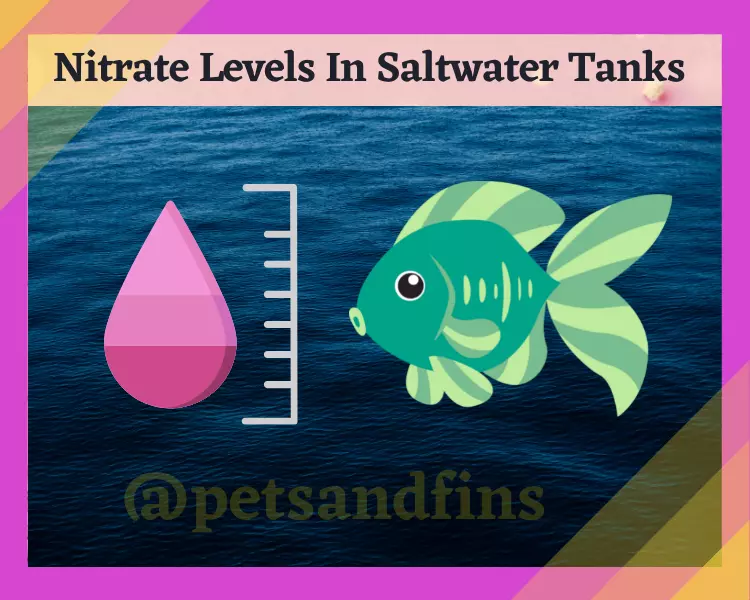
Saltwater tanks are especially vulnerable to nitrate contamination because of their enclosed ecosystem. Once nitrates enter a saltwater tank, they’re very difficult to remove. And since fish and other aquatic creatures tend to be more sensitive to nitrates in saltwater, it’s important to keep levels as low as possible.
The best way to do this is by preventing nitrates from entering the tank in the first place. This can be done by using a reverse osmosis filter. So nitrates are more harmful in saltwater tanks. They must always remain below 5 PPM.
A refugium helps reduce nitrates in saltwater tanks by providing a place for good bacteria to grow. The beneficial bacteria that lives in a refugium helps to break down the nitrates in the tank, which reduces their levels and makes it easier for the fish to breathe.
In addition, the good bacteria also helps keep the ammonia levels in check.
Wrapping Up:
So, we’ve talked about the dangers of high nitrates in fish tanks and what you can do to keep levels low. Remember, water changes are key, as is adding live plants (which also help remove ammonia and other toxins from the aquarium).
You should also avoid overcrowding your tank with too many fish and removing decaying plants. Finally, don’t overfeed your fish – this will only create more waste and increase nitrate levels. Do you have any questions about keeping nitrates under control in your aquarium? We’re happy to help!

